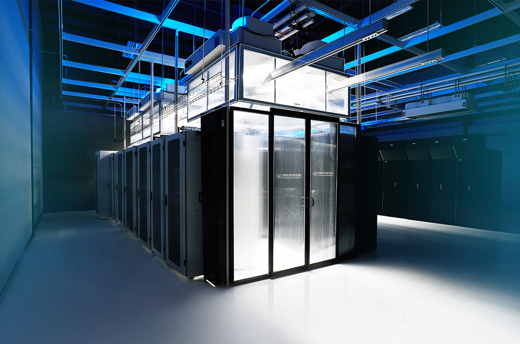
Data centers currently use nearly 3% of the world’s electricity - as much as Great Britain - and emit as much CO2 as all the world’s airlines combined. We have the technology to cut down data centers’ electricity consumption and use their surplus heat for heating homes.
The global need for data storage and processing is snowballing – from 1 zettabyte in 2010 to a projected 44 zettabytes in 2020. By 2025, global demand will be an estimated 180 zettabytes – the equivalent of every single person alive today needing 48 laptops for data storage.
Seen from a climate and energy point of view, the main challenge is cooling, since around 40% of a data center’s power is used to cool its servers. And luckily the solutions are already at hand. Using technologies that are on the market, Danfoss helped Facebook make its data center in Luleaa, Sweden, the cleanest and one of the most efficient of its kind in the world.
High-pressure Danfoss pumps with capacities of 13,000 l/h cool Facebook’s servers using mineral-free water that guarantees 100% sanitization – which is good for both employees and data. This system already saves Facebook 50% on costs. The data center is also solely hydro-powered and emits no CO2.
In the U.S., Danfoss’ compressors, heat exchangers and drives have helped Lenovo cut 90% of the electricity consumption in two of their data centers.
And another world-leading company estimated that for every 100 watts used to power servers at its 40-building campus in San Diego, another 50 watts were needed to cool them. With Danfoss’ help, a 700-ton chiller was replaced by a new 1400-ton chiller with Turbocor® compressors that cut annual compressor energy costs by more than 30%.
But data center solutions can – and should – go way beyond cooling. In district heating systems – such as those that cover 64% of Denmark and are mainly based on renewable energy - we already have the technology to use surplus heat from data centers for household heating. As an example, Apple and Facebook’s two data centers planned for construction in Denmark will be able to provide heating for 40,000 homes.
The US Department of Energy estimates that energy-efficiency improvements in data centers could save up to 33 billion kWh annually by 2020 - representing a 45% reduction compared to current efficiency trends. And that is only for the US. Globally, there are 8.6 million data centers.
We are already able to save up to 90% of the energy those data centers use for cooling. We can supply them with carbon-free, renewable energy and in some cases, use their surplus heat to keep households warm. These are all real solutions we can start implementing right now to crush the snowballing data center challenge.
